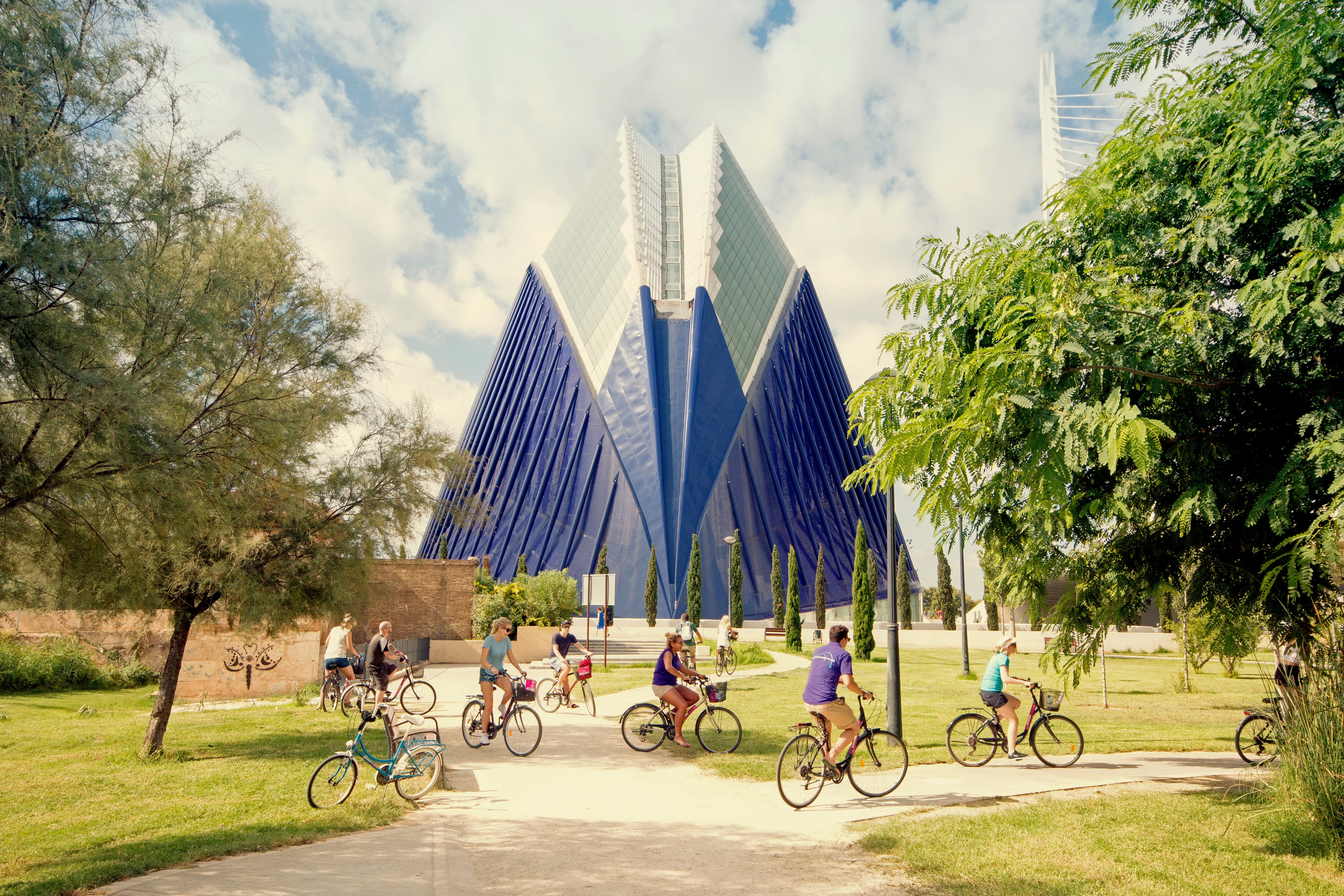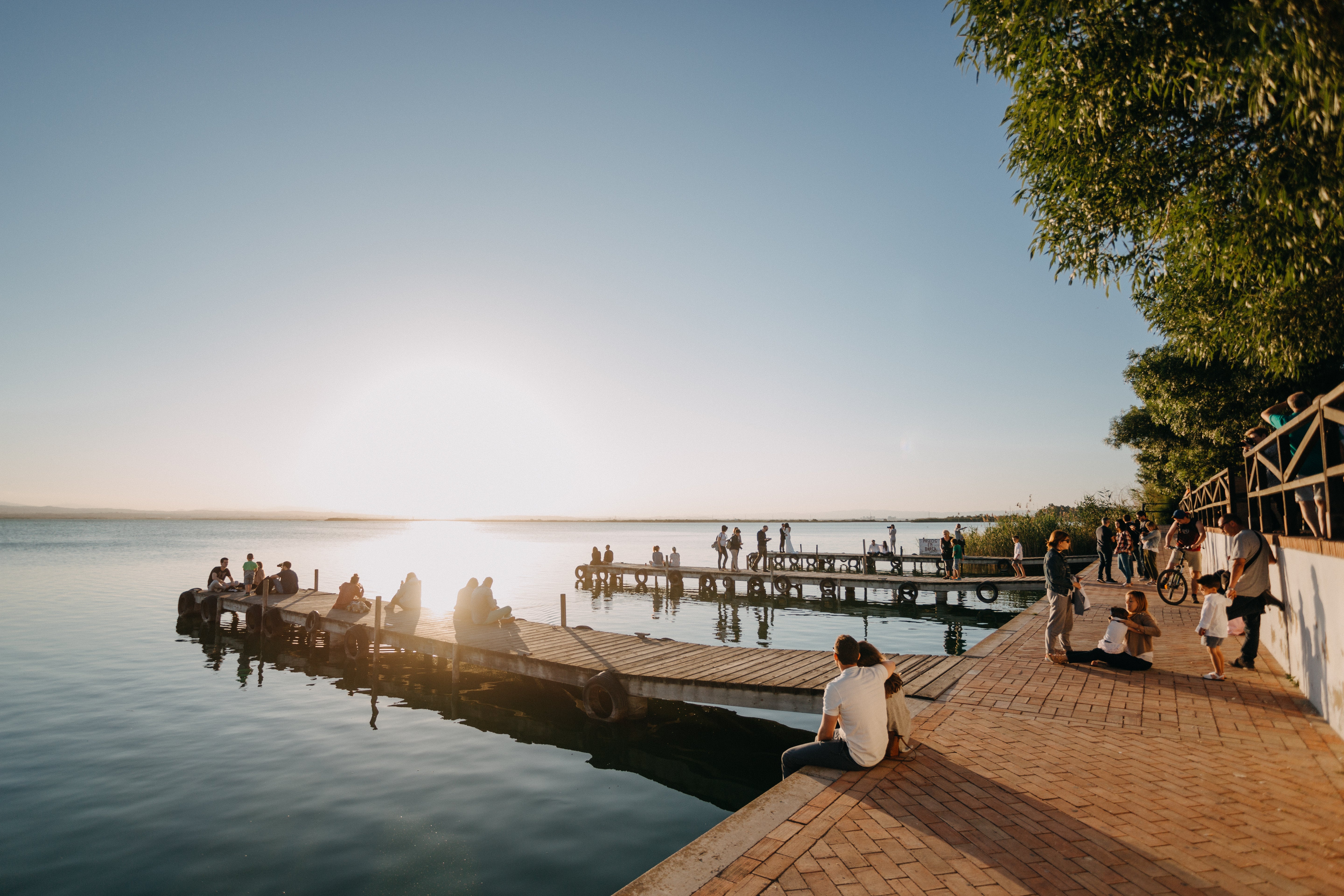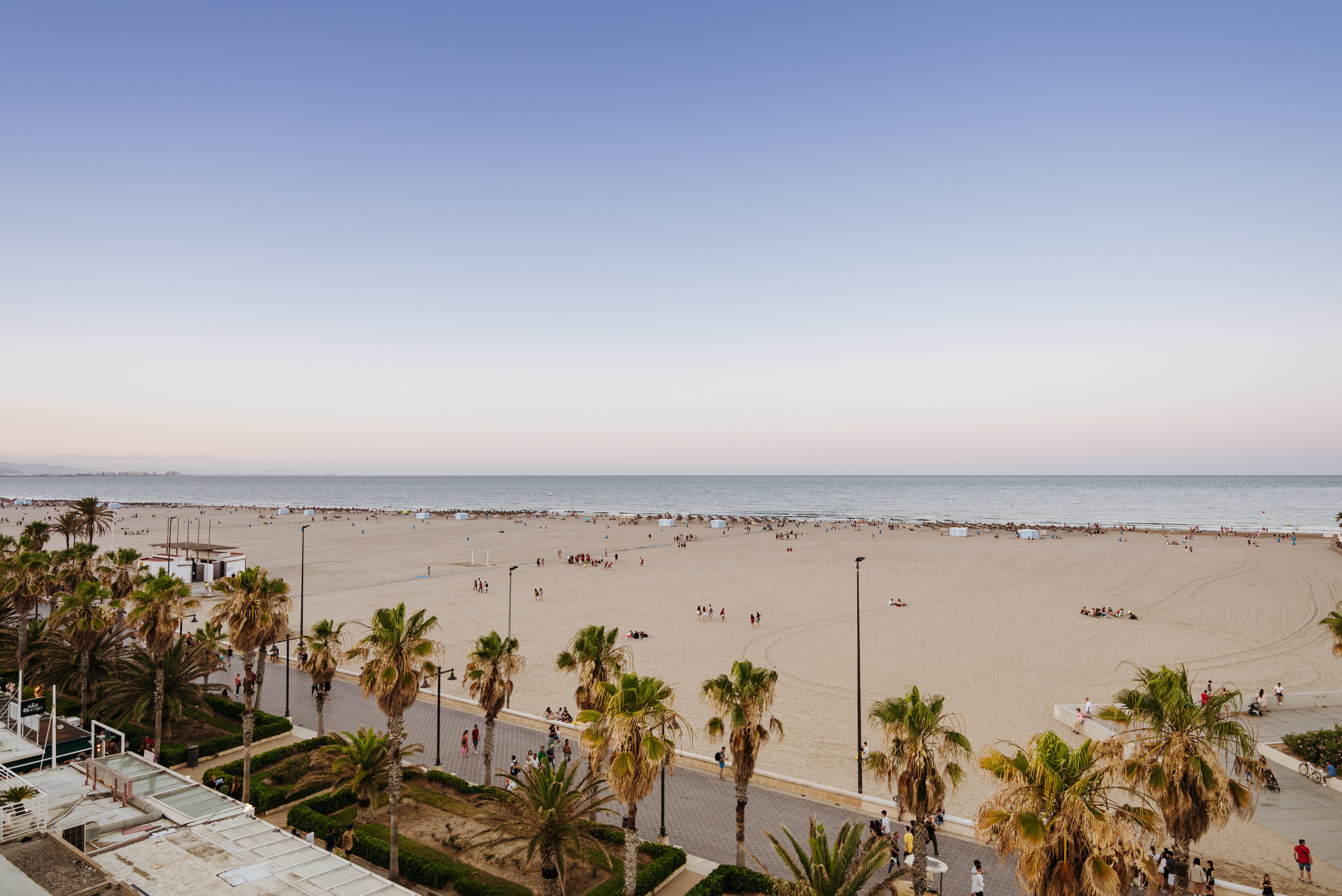An urban paradise: From river parks to sustainable hotels, exploring Valencia’s greener vision
From eco-friendly stays to seasonal eateries and smart landscaping, Benjamin Parker experiences Valencia’s sustainable travel initiatives

It’s odd to stand in the centre of the Turia River in Valencia. My feet don’t sink into mud but rest on grass; I’m brushed not by surging water but a gentle breeze that blows through palm and citrus trees, warmed by the southern Europe sun. Because this river is Jardín del Turia, longest urban green space in Europe, snaking for nine kilometres of intricate bridges, pine trees, ponds and fountains. It’s an unmissable example of Valencia’s drive to ‘go green’ – physically and metaphorically.
I’m visiting as the southern Spanish city sits on the cusp of its tenure as European Green Capital 2024, the first Mediterranean destination to achieve the award. It’s been honoured for its achievements in striving for carbon neutrality and an inclusive, community-minded approach to its green goals, as well as sustainable tourism – my reason for being in Spain’s third-largest city, wanting to discover more.
A city committed to change

This river reborn as a park is a strong hint to Valencia’s pioneering approach to problem solving. Having been prone to dangerous flooding, one breach of its banks in 1957 led to the diversion of the Turia in order to protect people and property from further destruction. Such a bold step predates the 21st-century focus on climate change, and such creative thinking returns to Valencia as it takes the mantle of Green Capital.
And still, more than half a century later, a focus on the real needs of people, and their involvement in projects, underpins every initiative.
Paula Llobet, the city’s minister of tourism, innovation and international relations, says that Valencia was already looking at sustainability but 2024 offers the chance to be more ambitious as residents think about the future.
“People are so worried about climate change. In our city, we have seen it change a lot over recent years,” she tells me.
“We have temperatures that are getting really, really hot in the summer – we have to work on this as otherwise in time tourists could go to other places. We have to prepare Valencia … it is something the citizens are asking for, and what we do can then give a better quality of life.”
“Being the Green Capital is an opportunity to change how people see Valencia as a city but it must be a project of transformation in all neighbourhoods. People here must see that their quality of life is improving because if not then it’s not a real change.”
Valencia already excels in many quality of living rankings. Enviable public transport options, affordability, and a naturally beautiful location home to almost 20km of beaches. Almost all residents– 97 per cent – live within 300 metres of an urban green space.
I’m not the only one impressed. Britons are flocking to Valencia, with 68,000 visitors from the UK between January and August 2023, up 12 per cent compared to 2022. A growing roster of flights (it’s under two and a half hours from London) make it all the more appealing.
I asked Paula what being European Green Capital meant for visitors, with the answer simple: everything.
“Anything that is happening in the city, we are looking at it as a Green Capital. It doesn’t matter if it’s accessibility issues, or events taking place, gastronomy.”
“We have an opportunity to be a pilot for Europe, a lighthouse. Other cities can follow us. It’s really important. We want to put innovation at the heart of everything … this is a starting point for something that will be a project for a long, long time.”
The places where visitors lay their heads have embraced the green agenda. I stayed at Helen Berger Hotel, a boutique property in the La Seu district, next door to the incredible neoclassical architecture of La Nau. It’s part of Stayingvalencia, a local brand that comprises six hotels, five apartments to rent and five restaurants in the city. It’s the first hotel chain to be awarded the “S Sustainable Tourism” accolade by the Spanish Tourism Quality Institute (ICTE), implementing “Sustainable Development Goals” that are measured by an external audit.
Their aims are impressive. They range from water management –reducing the pollutants they discharge into the system, and cutting back on consumption – through to supporting those who are “ill or at risk of exclusion”, such as providing free accommodation for refugees from Ukraine. The brand hopes that it will be a model for “an increasingly tolerant and respectful world”.
Keeping beaches beautiful

Around 20km south of the city centre, close to the vast Parc Natural de l’Albufera, is Parador de El Saler. It’s owned by Paradores group, which traces its origins back to 1910, and over recent years has won a haul of awards for its responsible tourism practices. Guests walk paths around the property made from recycled plastic collected from the beach; the golf course, one of the main reasons to stay, is native Bermuda grass that suits the local climate, and requires no mowing or water in winter and very few chemicals to stay healthy; all of ‘waste’ water at the hotel is treated and used to irrigate the course.Huge effort has gone into regenerating the sand dunes that run along the coast beside Parador de El Saler. More than 100 people have participated in the project, which has seen more than two million seeds dispersed over 8,100 square metres, introducing 24 different species – five of which are in danger of extinction. As with Helen Berger Hotel, the emphasis on sustainability to a visitor is strong but subtle, and it’s working.
The city’s green priorities can be seen in its food scene, too. Valencians love to feast, and encourage tourists to do the same – it’s the birthplace of paella, after all. In El Cabanyal, a colourful fisherman’s district with a shore lined by palm trees, is Casa Montaña, a charming tavern that looks as though little has changed since it began serving in 1836. It has a storied history as a favourite haunt for artists and politicians, and still retains a magnificent wine cellar. Dishes are vibrant and fresh, the simplicity belying intense flavours. Menus follow the seasons closely, but if you can, try chunks of sirloin paired with green garlic shoots or the stewed broad beans that make up the classic michirones – plus a glass of the full-bored, house-made vermouth.
Each year since 2021, Casa Montana has published a sustainability plan, including a focus on responsible consumption and production of food, the environment and climate change, as well as social goals, including gender equality and improvements in people’s health – the restaurant sponsors the women’s football team in the area.
Casa Montaña has launched a number of initiatives, such as “Vuelta a las raíces”. Collaborating with the Organic Production Service of Valencia and the Global Nature Foundation, the chefs will use traditional produce that is otherwise at risk of disappearing to protect agricultural heritages, encouraging the cultivation of certain resources. There’s also a push by sommeliers on wines made from recovered native grapes, such as arcos, mandó and giró. The aim, the restaurant says, is to get the kitchen as close to the sea and farmland as possible; one look at a map of their suppliers shows how much they value minimising food miles.
A cycle-friendly city

Beyond dining and lingering in hotel rooms, the city’s contours and geography tempt for easy exploration. Mountains can be seen in the distance but otherwise the centre is flat, meaning a wonderfully walkable location – or cyclable, which is an even better way to experience. Do You Bike Rental offers a series of tours on two wheels that weave through the Old Town, with stops at historical churches, bustling squares and the Unesco-protected Silk Exchange, down through the Turia green space before reaching the La Ciudad de las Artes y las Ciencias, or the City of Arts and Sciences. This futuristic, otherworldly complex where arts, sciences and culture meet within structures designed by Santiago Calatrava, a Valencia-born architect. From the outside it’s all bright whites and deep blues across curvaceous shapes, set beside pools of baby-blue water.
It’s after experiencing the juxtaposition between historic Valencia and ultra-modern, I meet Antonio García, general manager of Valencia European Green Capital. I ask him how the city can successfully approach future challenges in its year as European Green Capital.
He used the same phrase as Paula, echoing how Valencia can be the “lighthouse of Europe” for sustainability.
“I want to have an open agenda for all the year. We want everyone – the people who live here, the companies that trade here – to change their mentality around sustainability,” he says.
“We’ve done it before and we can do more to protect the environment … we want it to be in the DNA of Valencia”
“We have an opportunity to test different plans during 2024. We will work with schools, with children, and actually all ages, to teach the benefits of our work. There is so much going on in the world, with wars and economic issues, but now is the time. If we work hard we can use being the Green Capital as a starting point for a greener future – and rest of the world can follow”
As for now, all eyes are on Valencia as they begin their remarkable stint as European Green Capital. Virginijus Sinkevičius, the EU commissioner for environment, oceans and fisheries, made specific mention of Valencia while praising “trailblazer cities” who are demonstrating how “local action that contributes to zero pollution, biodiversity and circular economy can be planned and quantified”.
Standing in the Turia, you can feel a youthful, exciting energy simmering under the surface of Valencia. The river used to allow water to course through the city – now it’s a testament to the green future running through the heart of this destination.
To find out more about Valencia and to start planning your trip, click here
